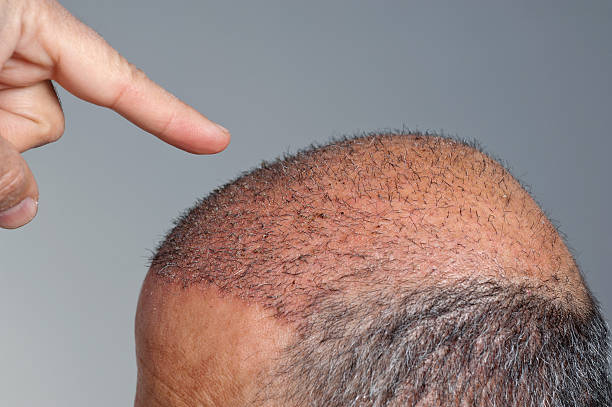Unveiling the Truth: The Science Behind Hair Transplant Success
The pursuit of a full head of hair has been a constant in human history. Once a symbol of vitality and strength, hair has always played a significant role in our self-image. However, the challenge of hair loss remains a prominent issue for both men and women worldwide. This article delves into the history and science behind one of the most effective solutions for hair loss: hair transplantation. We will explore the process, the technological advancements, and the factors that contribute to the success of this surgical procedure.

The Journey to Modern Hair Transplantation: A Historical Overview
Hair transplantation is not as modern a concept as one might assume. The first recorded hair transplant surgery dates back to the 19th century in Germany, performed by dermatologist Dr. Menahem Hodara. However, it was not until the mid-20th century that significant strides were made, thanks to the pioneering work of New York dermatologist Dr. Norman Orentreich. He introduced the concept of “donor dominance,” which posits that hair moved from a non-balding area (donor site) to a balding area (recipient site) will continue to grow as if it were still in its original location.
This groundbreaking discovery paved the way for modern hair transplantation, which has evolved into a sophisticated and minimally invasive procedure. Today, we have two primary methods: Follicular Unit Transplantation (FUT) and Follicular Unit Extraction (FUE). Both methods have their merits and drawbacks, and the choice between them often depends on the individual’s hair loss pattern, donor availability, and personal preferences.
How Hair Transplants Work: The Science Behind the Success
Hair transplantation is based on the principle of “donor dominance,” but how does it work in practice? The procedure involves removing hair follicles from an area with dense hair growth (usually the back or sides of the scalp) and transplanting them to the balding or thinning areas. These transplanted follicles, still genetically programmed to grow hair, continue to do so in their new location.
Crucially, the success of a hair transplant hinges on the survival of these follicles. The key is to ensure that the follicles remain healthy during the extraction and transplantation process. Technological advancements have made this possible. For instance, stereomicroscopic dissection allows for the precise extraction of follicular units, ensuring minimal damage. Moreover, techniques like Platelet-Rich Plasma (PRP) therapy, which involves injecting a concentration of the patient’s platelets into the scalp, can stimulate hair growth and enhance the success of the transplant.
The Impact of Hair Transplants: Changing Lives, Changing Perceptions
The impact of hair transplants extends beyond the aesthetic. For many individuals suffering from hair loss, the procedure is a lifeline to restored confidence and improved mental wellbeing. As hair transplant technology has advanced, so too has its acceptance. It’s no longer a hushed, taboo topic but rather a viable and openly discussed solution to hair loss.
Moreover, the success rate of hair transplants has increased significantly over the years, with research showing that around 85-95% of all transplanted hairs will grow back in the transplanted area. This high success rate, coupled with the natural-looking results achieved, has contributed to the procedure’s growing popularity.
The Future of Hair Transplantation: Exploring New Frontiers
As with any medical procedure, hair transplantation is continually evolving. The future may hold even more promising techniques for hair loss treatment. One such advancement is the potential use of stem cells. Preliminary studies show that using stem cells to regenerate hair follicles could provide a more effective and less invasive solution to hair loss. While this research is still in its early stages, it indicates exciting possibilities for the future of hair restoration.
The Key to Successful Hair Transplantation: Understanding Individual Needs
The success of a hair transplant is not solely reliant on the procedure itself. It also requires a comprehensive understanding of individual needs and circumstances. Factors such as the patient’s age, hair type, degree of hair loss, and overall health can significantly influence the outcome. Therefore, it is crucial to have a thorough consultation with a qualified professional who can provide a personalized treatment plan.
In conclusion, hair transplantation has come a long way since its early days. Through continual advancements and a better understanding of individual needs, it has become a highly successful solution for hair loss. However, as we look towards a future of potential stem cell treatments and other innovative approaches, it’s clear that the journey to perfect hair restoration is far from over.




